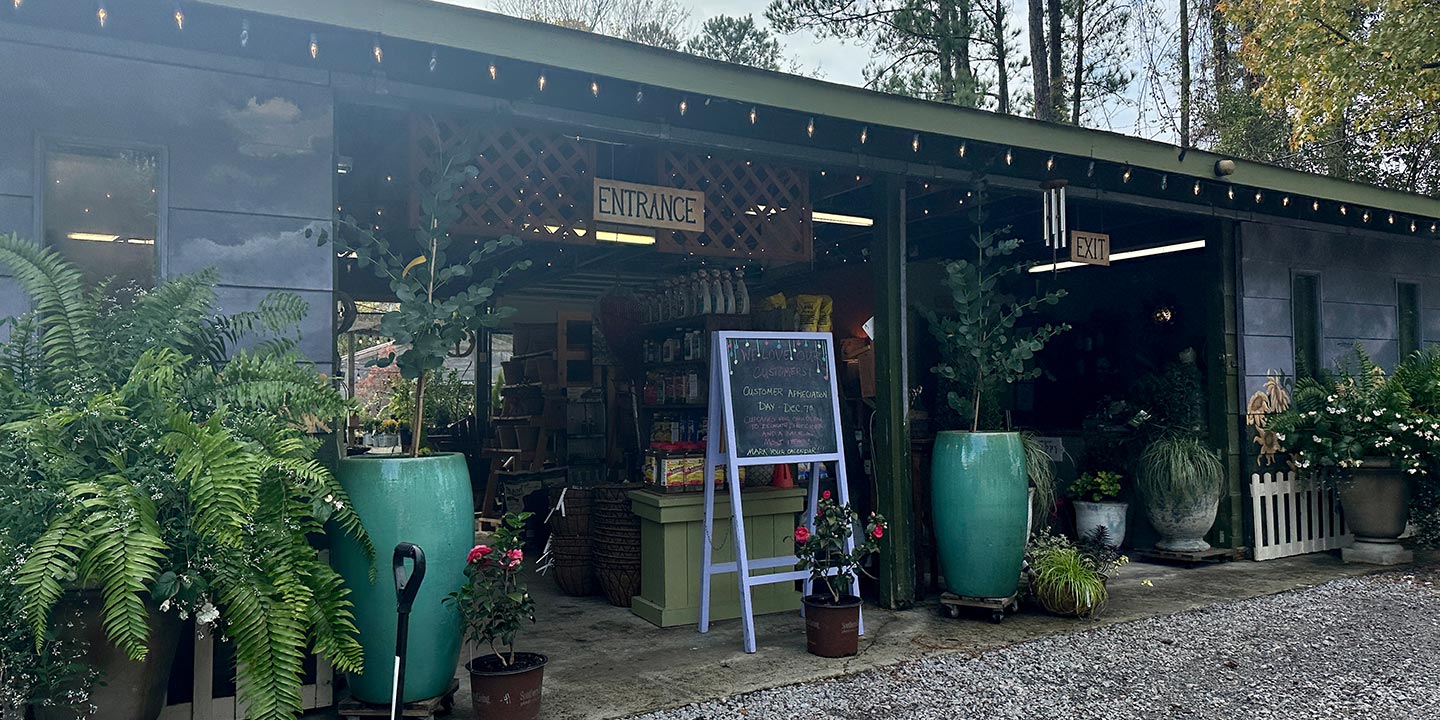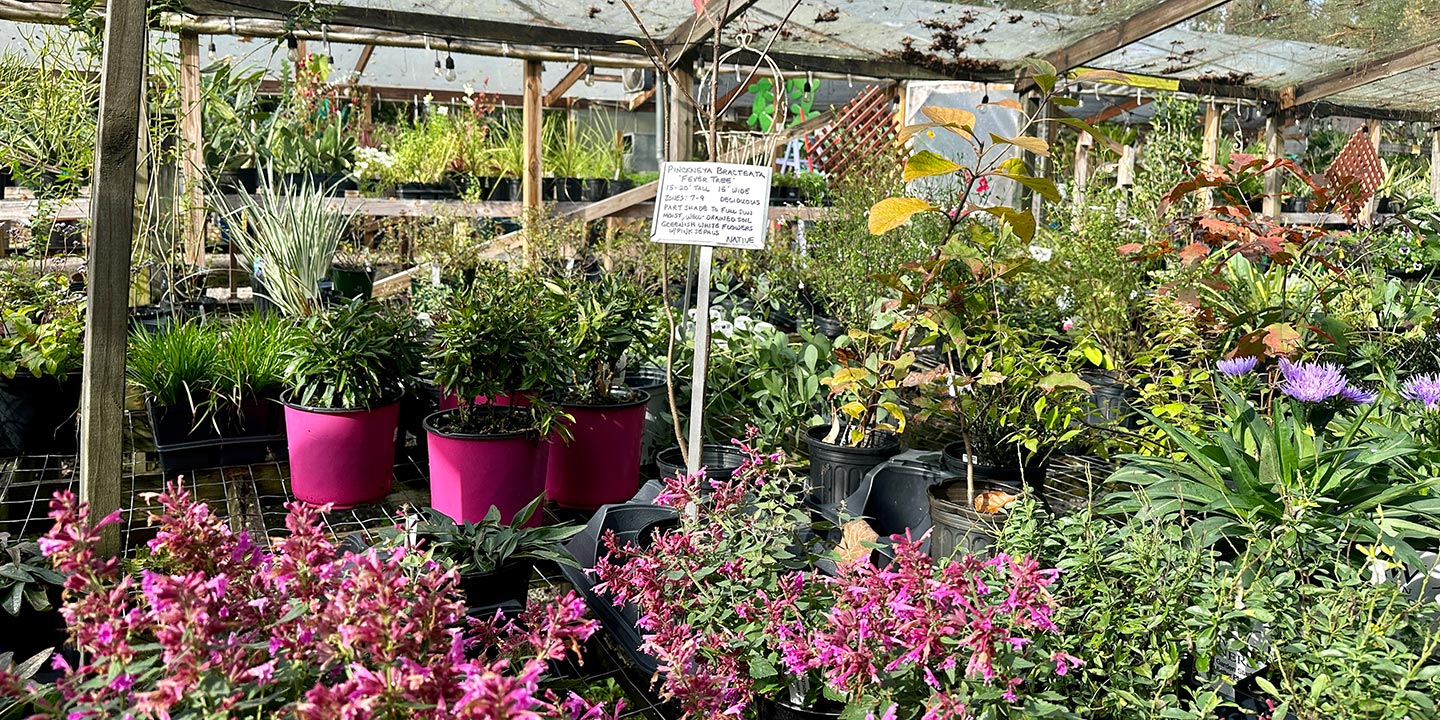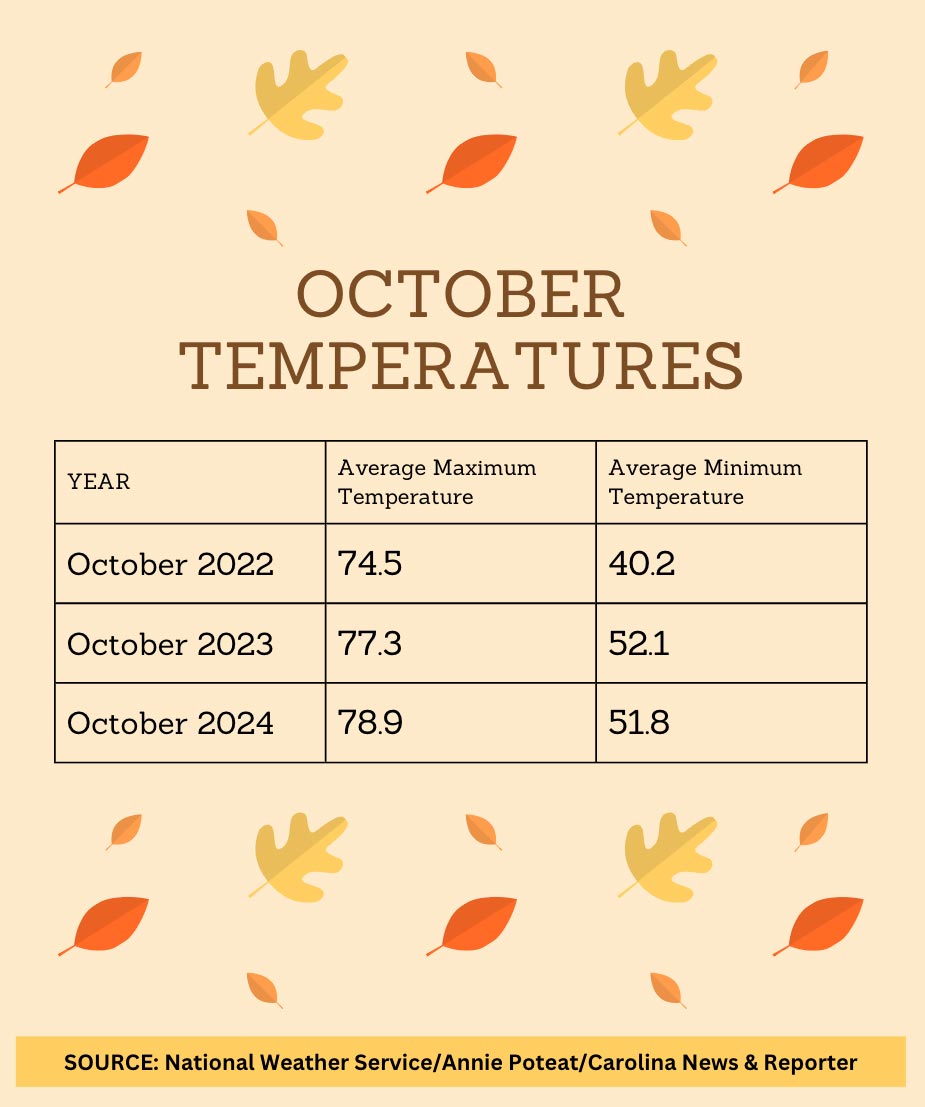Trees on the Horseshoe on the University of South Carolina’s campus haven’t changed color yet. (Photos by Annie Poteat/Carolina News & Reporter)
Why aren’t some of the leaves changing colors this late in the season? Why is everyone still wearing shorts?
It’s not your imagination.
Columbia’s average temperature in October is steadily climbing.
The average maximum temperature in October 2024 was 78.9 degrees, whereas in October 2022, the average maximum temperature was 74.5 degrees.
The National Weather Service of Columbia watched the tropical systems affect the area earlier in the season but hasn’t seen many systems since, which can affect the temperature, forecaster Emily Carpenter said.
“We were kind of just under pretty strong ridging across the Eastern U.S., which kept a lot of the storms off to the north,” Carpenter said. “And when you’ve got prolonged periods of dry weather with high pressure, you’re generally going to be warmer than normal.”
So what else is affected by the warm temperatures this autumn?
The first day of fall was Sept. 22, and the end of the season is approaching. But some of the trees in Columbia still aren’t changing colors.
Robert Carter is an area forestry and wildlife agent with Clemson University. He said the leaf changes come from a combination of temperature and the time change.
“To have really brilliant leaves in the fall, you’ve got to have warm days and really cool nights, but not freezing,” Carter said. “And we just haven’t had that. It’s been warm during the day and warm at night.”
But the time change helps speed the process along even if it’s not cool outside, Carter said.
“Long nights are still telling the leaves that they’ve got to prepare to drop,” he said. “The veins that go from the leaf into the branch, when the days get short and the nights get long, … they start to shut off the veins that go into the leaf. So that’s preparing the leaf to fall off.”
When the days are shorter, leaves get less sunlight and in turn, less chlorophyll, Carter said. That’s what makes the leaves lose their green. But without the cold, it’s hard to find trees with “brilliant reds.”
Trees that are native to South Carolina can recognize the new nighttime length and drop their leaves regardless of the temperature, Carter said.
Oak trees, hickory trees, cherry trees, dogwood trees and redbud trees began to change before the air got cooler because they have adapted to the region.
Lori Watson owns the Mill Creek Greenhouses in Columbia. She said cooler nights help plants and flowers rejuvenate as well.
The lack of humidity this fall has impacted the plants at her nursery more than the temperature has, Watson said.
“We’re usually humid here,” Watson said. “But like this fall, we had a very dry fall. I would look at the dew point in the middle of the day, and it would be like 25 or 30 when usually it’s like 59 or 60 here. And that, to me, means things in small pots are drying out. So we have to go through and water maybe twice a day.”
October tied for the driest month on record, Carpenter said.
Now, it’s starting to rain some more and cool off in Columbia, but it’s not quite as cold as he remembers it being this season, Carter said.
“I just noticed that the whole rest of my life, around Halloween, was when we had our first frost,” Carter said. “You know, it’s almost the middle of November, and we’re not there yet.”





